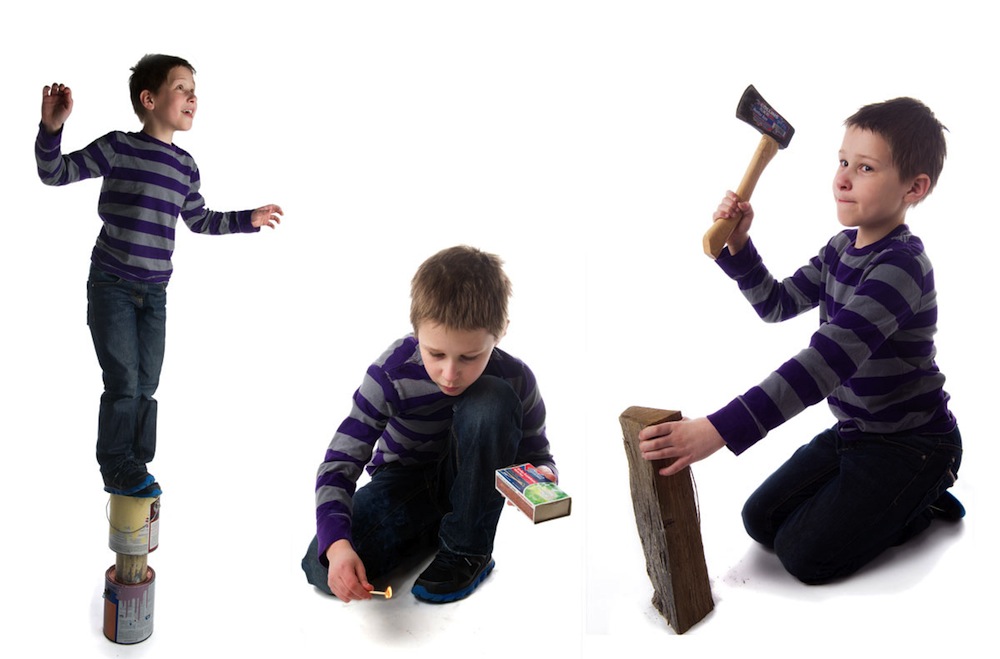To Keep Kids Safe, Explain, Explain, Explain

Learning not to touch a hot stove, or climb up on a steep roof in search of a lost baseball is key to making it through childhood unscathed. Now, new research suggests that parents can help their kids understand these risks with explanations, not orders.
Researchers found that mothers tend to guide their children in conversations about the danger of injury. And there's good news: Kids do listen. About 80 percent of the time, these conversations led kids to agree with their moms' opinions.
"When kids have done something that isn't safe, or hurt themselves, it's easy for parents to say, 'Don't do that again,' or 'Be more careful,'" said study researcher Jodie Plumert, a psychologist at the University of Iowa. "That's fine to say, but I think the real lesson here is for parents to really explain to their kids why something isn't safe." [9 Weird Ways Kids Can Get Hurt]
Talking safety
Plumert and her co-researcher Elizabeth O'Neal, a graduate student at the university, recruited 63 mothers and their 8- or 10-year-old children for an experiment on safety conversations. First, both mothers and children saw photographs of kids in situations with various levels of danger — trying to split wood with an axe, for example, or skateboarding down a driveway.
The moms and kids individually rated how dangerous the situations were on a scale of one to four. Next, the moms and kids came together to look at the photographs again, and discuss them and decide on a safety rating together. The researchers recorded the conversations.
Moms frequently started by asking the child his or her opinion, and then often guided the child's thinking by pointing out dangers the child had missed — a sleeve dangling over a red-hot stove, for example. The mom would then tie those features to a particular danger, such as the sleeve catching on fire.
Get the world’s most fascinating discoveries delivered straight to your inbox.
About one-third of the time, the child and the mother started out in disagreement over the situation's safety, Plumert told Live Science. But in the ensuing discussions, mothers were able to sway the child to their point of view 80 percent of the time.
Those areas of disagreement are fertile ground for learning, Plumert said. "The parent is really able to talk with the child about why they think something is dangerous."
Counseling risk-takers
The researchers also found a hint that for some kids, such discussions might be particularly important. Children with a history of injuries requiring medical treatment were less likely to note potential dangers in a scene, Plumert said.
"It might mean that kids who are bigger risk-takers are more likely to discount danger," she said. For those kids, mom and dad's counsel might be most important of all.
The study looked mostly at white mothers with college degrees, and more research is needed to see if there are differences in the way moms from other social classes speak with their children, Plumert said. The researchers are also interested in studying how dads talk about safety. Finally, researchers need to look at "where the rubber meets the road," Plumert said, finding out whether all these discussions change kids' likelihood of taking risks in the future.
The findings appear today (March 20) in the Journal of Pediatric Psychology.
Follow Stephanie Pappas on Twitterand Google+. Follow us @livescience, Facebook& Google+. Original article on Live Science.

Stephanie Pappas is a contributing writer for Live Science, covering topics ranging from geoscience to archaeology to the human brain and behavior. She was previously a senior writer for Live Science but is now a freelancer based in Denver, Colorado, and regularly contributes to Scientific American and The Monitor, the monthly magazine of the American Psychological Association. Stephanie received a bachelor's degree in psychology from the University of South Carolina and a graduate certificate in science communication from the University of California, Santa Cruz.


